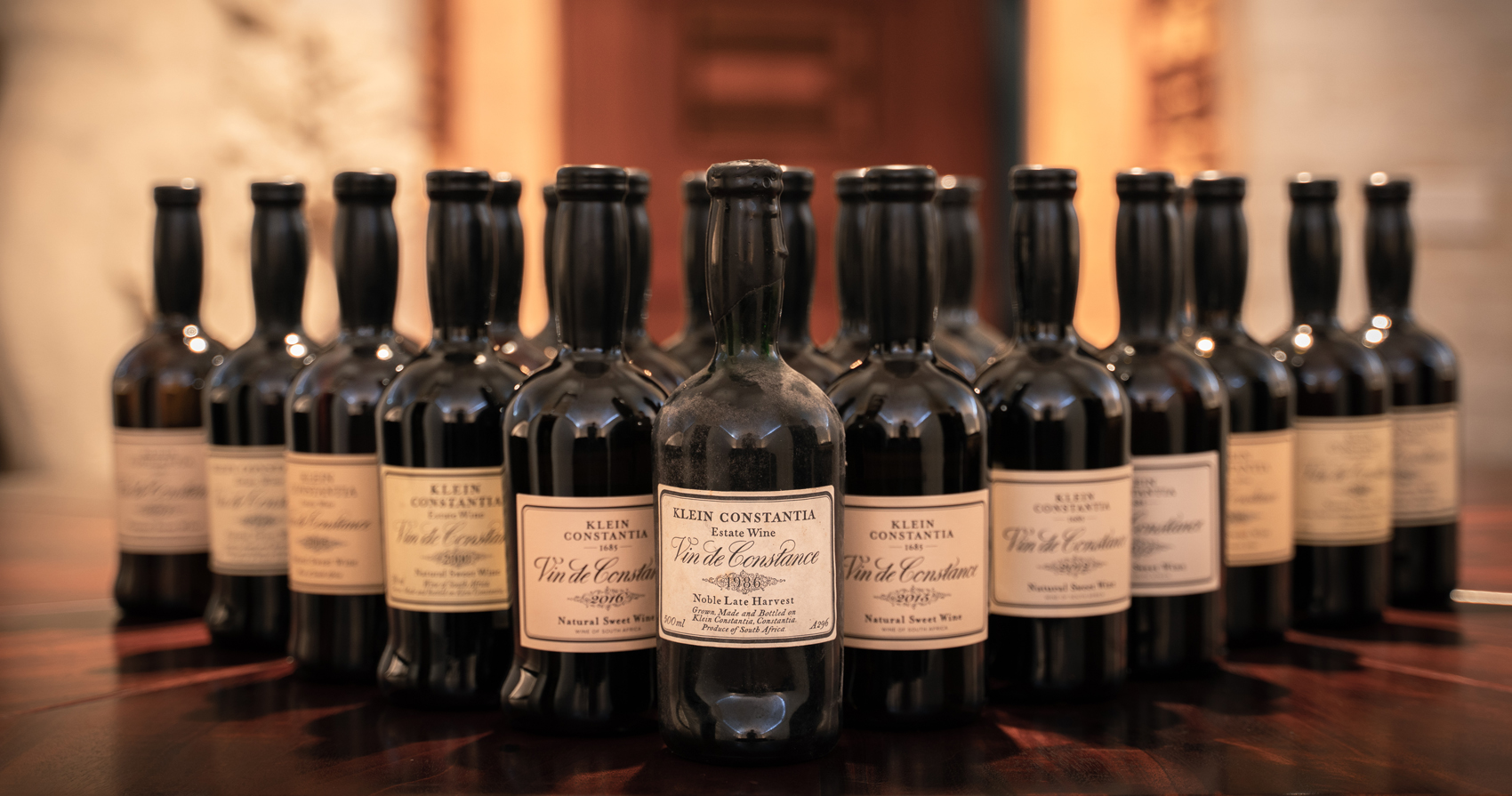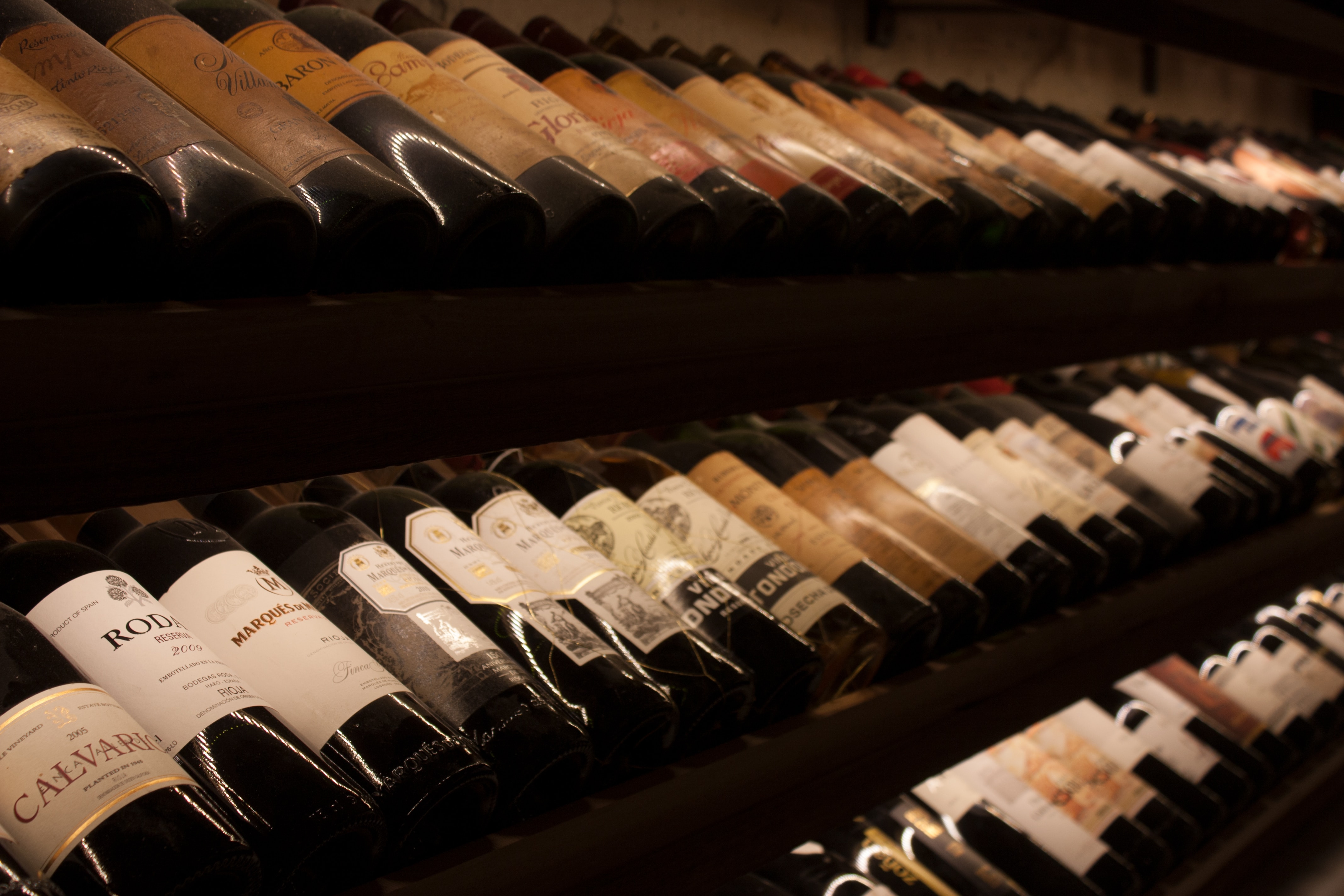HOW TO ORGANIZE AND CATALOG A WINE COLLECTION
Jun 18th 2024
INTRODUCTION
Eventually all wine collectors converge on the same truth: the need to organize and catalogue a wine collection. The realization almost always dawns, slowly and soon after the seed of interest in wine inevitably leads to a couple of bottles being stashed under a bed or in the spare room cupboard.
Those bottles are stashed away from the easy-to-hand varieties: wines usually acquired at a cost one is comfortable repeating. They are the wines for drinking while cooking; for using in cooking; for pouring at the end of a tough day; or, for serving at a casual meal with friends.
These uncatalogued wines are not the wines presented as gifts, to impress or to celebrate. The special wines, like that Anthonij Rupert Wines Cabernet Sauvignon or Afrikaans Vol. V Red Blend from Stellenbosch, are reserved for keeping, often acquired with great effort or above average cost, or both.

WHY STORE WINES?
To expand on the reasons why we’d want to put wines away in the first place, the urge often starts out as a desire to heighten some special occasion. The proverbial cherry on a grand milestone like a new job; the closing of a tough deal; a wedding or a big birthday. You’ve saved that Agricola Brandini - 'Barolo La Morra' Nebbiolo from Piemonte and now the time has come to crack it open!
But, at some point, our perspective as a now determined wine collector may change and this happens with or without outside input. We may come to new insight by ourselves, or someone may raise, say, the wisdom of Sideways – the 2004 road trip movie about two friends of vastly unequal wine interest exploring the vineyards of Napa.
“Seriously, the ’61 Cheval Blanc is peaking….it might be too late already,” asks Maya, one character and new friend to one of the protagonists. “What are you waiting for?”
Miles, played by the incomparable Paul Giamatti, responds: “I don’t know, a special occasion. With the right person.”
Maya shrugs. “I think the day you open a ’61 Cheval Blanc, that’s the special occasion,” she says.
From this view, the wine is the moment. The point segues neatly into the fact that wine itself is a snapshot of a season. Every vintage tells a story about the climate, the grapes and even the personalities involved in its creation. Premium wines are often premium because of the attention their makers take in capturing and preserving that story through, for example, low impact winemaking techniques.
So-called “natural wines” are all about this story, even to the point of letting natural yeast strains determine the wine’s final voice.
Klein Constantia Vin De Constance is a great wine, but can only truly be appreciated when you know it’s incredible history.
Inevitably, our understanding of storing wine evolves and uncovers a deeper appreciation of the whole and the individuals. A collector may, for example, own rare and valuable wines, but these may not equate to wines the collector truly adores.
Ultimately, the mission to organize and catalogue a wine collection becomes clear and deliberate.

The reasons to create space for a wine collection
There are two main reasons that commonly spark a newcomers re-look at how wines are stored. The first relates to our appreciation of value: we want to preserve something deserving of preservation.
Winemakers often actively encourage us to keep their wines.
Delaire Graff Cabernet Sauvignon Reserve 2020 is recommended to age for 8 – 12 years from vintage. Rickety Bridge advises its 'The Bridge' Cabernet Sauvignon 2020 may be matured up to 2030. Likewise, Pasarene says its Marathon Cabernet Sauvignon 2020 will continue to develop in bottle until 2025.
The second reason that gets us thinking occurs perhaps more widely that we might want to admit, and it is far less enviable, but equally necessary.
After a few years on the cupboard’s top shelf, that special wine is presented. If it is covered in dust, so much more the anticipation. We soldier on past the stuck and crumbly cork with its leaky trace and pour. The result is deflating, and we promise never to go back.
We suddenly appreciate not only how important it is to mature our wines in a stable and ideal environment, but also how important that environment can be. Beyond deciding on an efficient wine rack, we want to enhancing our love for wines and their stories.
It is here that we begin learning how to organize and catalogue a wine collection.

Professional advice for creating and maintaining quality wine storage
Establishing a good wine collection that preserves wine and organizes it well too, doesn’t have to be a case of trial and error. There are many examples and much advice to be gained from consulting professionals who often take care of considerable facilities.
The French-born Germain Lehodey is described by veteran food writer Tony Jackman in a piece for Daily Maverick, as “South Africa’s original sommelier”. Last year, Germain was awarded a lifetime achievement award by the Eat Out, the country’s leading restaurant guide.
Last year also saw him publish a book entitled WINE: The second sauce of a dish – a discussion of the sommeliers craft, backed by his numerous decades of experience.
Germain says that wine lovers today do not age their wines like they did 50 years ago, mainly for two reasons. Good wine has steadily increased in price in tandem with farming costs, which is also one of the reasons most wines these days are made to be ready for consumption at an early age.
“The conditions for aging must be consistent. Constant temperature is crucial,” he says. “Wine has between and alcohol content of between 12.5 and 15%. Alcohol expands at different temperatures, placing pressure on the cork. The most common result is wine leaking from the cork or even pushing the cork out of the bottle.
“The cooler the temperature, the slower the aging!”
Ideally, humidity must be at least 65 % for the cork to keep its elasticity, but if the humidity is close to 100%, a collector needs to protect a wine’s label too.
“The bottles must be in a sleeping position for the wine to be in contact with the cork, and for the cork not to dry out. This is a problem found often with wines kept in general purpose fridges.”
Victor Okolo, sommelier at Cape Town fine wine and food restaurant Salsify at The Roundhouse has similar recommendations.
The restaurant is situated on the shoulder of Cape Town’s iconic Table Mountain, with its building dating to 1786 when it served first as a guardhouse and then as a hunting lodge for the 19th-century Governor of the Cape, Sir Lord Charles Somerset.
The Salsify wine collection comprises some 3 000 bottles from about 500 local and international producers. A cornerstone of this stock is its diversity.
Since the restaurant opened in 2018, its wines have become more inclusive and diverse – from female- and black-owned brands to more and more up-and-coming producers. “We also pride ourselves on having a wide array of well-known and unusual cultivars,” he says.
To ensure the collection stays in good shape, Victor says a weekly stock assessment and a monthly general stock take is undertaken. “We regularly rotate producers, stay on top of vintage changeovers and stock availability. We also work hard to stock investment wines – meaning, we don’t list all the wine we purchase straight away, instead we hold back these vintages for future listing. We always want to be in the loop for new producers and different ranges.”
For the home collector, Victor advises having a proper stock sheet of all the wines you have in the collection. “Make sure the climate is correct and always keep track of the market value of your collection, not only for you, but should you wish to insure it too.”
Tracking stock is best practice also applied at The Living Room at Summerhill, another leading South African restaurant.
According to sommelier Johanna Richter, The Living Room wine list focuses on South African wines comprising a range of classical wine producers, natural and orange wines and smaller boutique wine producers.
“Our list has grown with the addition of more vintage depth, bigger bottles, and more boutique producers – and a tendency of organic and natural wine,” she says.
For Johanna, the best way is to use the stock sheet – marking when bottles are taken out of cellar and adding new wine when acquired. “We also like to include tasting notes of the vintage and comments from wine maker in order for us to pick the right wine for the right occasion,” she says.

Attention to detail matters, no matter the size of your wine collection
Most wine collections remain small in their lifetimes, but the attention to these must be consistent irrespective of size. A great example comes from Singita luxury African safari lodges and wildlife reserves, which has a long tradition of wine excellence being part of their premier bush experiences.
Its wine collection comprises approximately 120 000 bottles, which are stored at the Singita Stellenbosch Maturation facility, and an additional 120 000 bottles across Singita lodge cellars throughout Africa. It is one of the largest South African wine collections, featuring a diverse range of wines, including limited Champagnes.
Among the remarkable treasures within its collection are a select few bottles of Lanzerac Cabernet Sauvignon from the esteemed 1957 vintage. These bottles are reserved for truly exceptional occasions, typically when guests, those who have graced Singita with their presence 28 or even 30 times, return to our lodges, says Singita Premier Wine Direct Logistic Administration Manager Schwess Keyser.
“These are individuals who truly appreciate and understand the depth of the wine experience, and we are honored to offer them the opportunity to indulge in such a rare vintage.”
According to Schwess, wine management operates from a centralized hub known as the Singita Stellenbosch Maturation (SSM) facility. “From here, we meticulously oversee the replenishment process for our properties. Initially, wines are transferred from SSM to bulk storage facilities located on each property. From there, we manage the replenishment of wines from these bulk storage areas to the individual lodge cellars, ensuring a carefully curated selection is available at each lodge.”
Schwess says that upon arrival at SSM, every wine consignment undergoes a thorough inspection to identify any potential label or bottle defects. Should any defects be detected, producers are notified, allowing them to replace the affected bottles. “This approach ensures that only the finest quality wines are served, even years down the line when they are served after the maturation period.”
“As part of our commitment to sustainability, we take measures to minimize environmental impact. During the inspection process, all plastic tape and polystyrene packaging are removed from the wine boxes, guaranteeing zero plastic delivery to our remote lodges, where disposal is more difficult. Additionally, we consciously select wines with cork or screw cap closures, avoiding those with plastic closures. These wines are stored appropriately, with corked bottles laid flat or upside down to preserve the integrity of the seal, while Champagne and MCCs are stored with the cork up, ensuring optimal aging conditions,” Schwess explains.
“We prioritize purchasing wines from producers with a commitment to quality akin to Singita's standards. Provenance is key, and we maintain a storage temperature of 12°C (53.6°F) at SSM and 16°C (60.8°F) at the lodge cellars. Temperature-controlled transportation also preserves wine quality, with temperature loggers monitoring each consignment.”
Schwess’s advice to collectors is: “When assembling a wine collection, categorize and record wines by type and vintage, following Singita's method. Serve wines according to specific vintages, prioritizing warmer vintages before stronger ones, such as serving 2016 before 2015 and 2018 before 2017. Vintage management is crucial for maintaining wine quality and enjoyment.”

Consider using companies that specialize in wine storage
Sometimes its impossible to create your own storage facility. Perhaps you’re in a small apartment where its just not feasible to organize and catalogue a wine collection. In these cases, you might want to use someone else for the job. Either way, public maturation cellars like the Bergkelder “wine bank” in Stellenbosch, also offer great tips when considering wine storage.
“In the world of fine wine, the word Provenance is becoming more important,” declares its marketing collateral. “Simply put, Provenance means origin or source. It is crucial when buying or selling older vintages, that you know where and how the wine has been stored or matured, to ensure that you are able to enjoy the wine in perfect condition...”
“Well-selected, perfectly matured wines are an investment in a quality lifestyle.”
The facility was established in 1984 offering to cellar customers’ wine under optimal conditions. In addition, the wine bank generates maturation reports compiled by wine connoisseurs who annually taste and grade the wines.
Overseeing the collection is Michael van Deventer, Vinotèque & D2C Manager (Heineken Beverages) as well as the curator of the Vinotèque’s wine library called the Tabernacle. The Bergkelder currently has around 40 000 cases of wine under maturation, this includes wines for customers as part of its Wine Bank as well as wines for sale now and/or in the future.
“Optimal conditions could be a temperature of between 12 – 16°C (53.6°F to 60.8°F) but most importantly the temperature that is chosen should be as consistent as possible. We also believe in a humidity range of between 65% - 75%. Too dry and the corks could fail, too high and you could damage labels. There should also be minimal vibration and no UV exposure or direct sunlight. At the Vinotèque we keep conditions as close as possible to 14°C (57.2°F) and 70% humidity.”
Michael says they use SAP as a stock program to keep track of wines and a monthly stock count. “Annual tastings to determine conditions are a must,” he adds.
“With wines from our Tabernacle, some dating back over 200 years, we also include an ullage indication as well as label condition.
“We run an annual re-corking clinic for wines 40 years or older to determine condition (by tasting) then we do a top-up with the same wine before we recork with new corks to ensure the wines are stable.”
Generally, the Tabernacle wines are only available once a year at an annual Heritage sale via special auction.
The Bergelder customers are mostly South Africans, says Michael, but do include international wine lovers who withdraw some of their holding on their annual South Africa vacations.

Step-by-step plan to create your own wine cellar
The journey to organize and catalogue a wine collection begins with a plan. In addition to the points made above, consider these tips as part of your journey:
- 1.Assess your space
Before diving into the organizational process, evaluate the space to house your wine cellar. Take stock of the available square footage, shelving options, and environmental conditions such as temperature and humidity. Optimal wine storage management begins with a well-designed layout that maximizes efficiency while preserving the integrity of your collection.
- 2.Consider shelving and racks
Central to any wine cellar is the wine rack, serving as both a practical storage solution and a visual centerpiece. Explore various wine rack designs, from traditional wooden racks to contemporary metal structures. Consider factors such as bottle capacity, accessibility, and scalability to accommodate future acquisitions. You may want stacking space for cases, and you’ll have to take larger format bottles into consideration too.
- 3.Implement systematic organization
Apply the advice of professionals detailed above with good cataloging, inventory and organization. Utilize software applications or manual spreadsheets to track essential details such as wine varietals, vintages, tasting notes, and cellar locations. You needn’t implement the Dewey System of libraries here! Chose whether to organize by style, price, variety, region or producer. It may seem over the top when the collection is small, but having a proper system in place for the long run saves re-doing it all later. Never forget where you put that treasured case of Vilafonté Series M again!
- 4.Curate a diverse collection
A well-curated wine collection reflects both personal taste and a spirit of exploration. Embrace diversity in your acquisitions, ranging from classic vintages to emerging varietals and regions. Many collectors prefer buying larger format bottles because their greater general stability ensures a more reliable outcome.
- 5.Look beyond shelving
Beyond mere functionality, your wine cellar presents an opportunity for sensory delight. Integrate aesthetic enhancements such as ambient lighting, decorative accents, and thematic décor. This creates an inviting atmosphere for both storage and enjoyment of the space. Picture yourself first opening and trying a long-awaited Beyerskloof Diesel Pinotage or J. Denuzière 'Côte-Rôtie' Syrah. Now picture what the place should look like when you do.
- 6.Let technology help you
Pen and paper, or chalk and chalkboards, are still often helpful, but new technology is constantly emerging. Excel is the old favourite, but these days there’s an app for this too. It will certainly help keep your data at your fingertips.
- 7.Regular maintenance
The journey towards impeccable wine cellar organization doesn't end with the initial setup; it requires ongoing commitment and diligence. Schedule regular maintenance routines to inspect for any signs of damage, organize newly acquired bottles, and update inventory records accordingly.

Build a DIY wine cellar that works
Creating an effective space to serve as your own private wine cellar doesn’t have to be expensive or complicated. You’ll certainly find options to excavate or build dedicated spaces, but wine cellars can be created successfully in an undisturbed corner of a spare room, or the garage.
By following a few simple rules to ensure consistent, cool temperature and optimal climate, and solid stacking, you can ensure that your chosen wines will mature to their very best, but also continue to be easy to find even when your collection grows. In no time, you’ll be advising others on how to organize and catalogue a wine collection.
Need something special to add to your newly organized cellar?
Shop wines you'll love from your favorite wine destinations across the globe with Cape Ardor Wine. Explore your favorite varietals, wine regions and more with Cape Ardor Wine and let us help you build an enviable wine collection that will stand the test of time.

